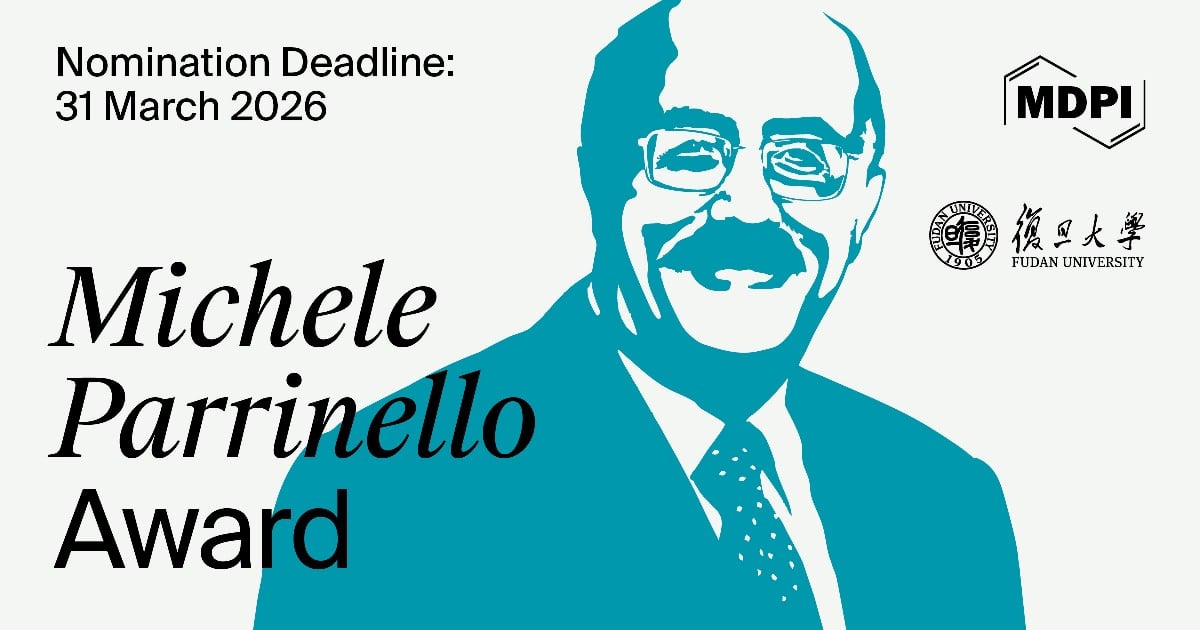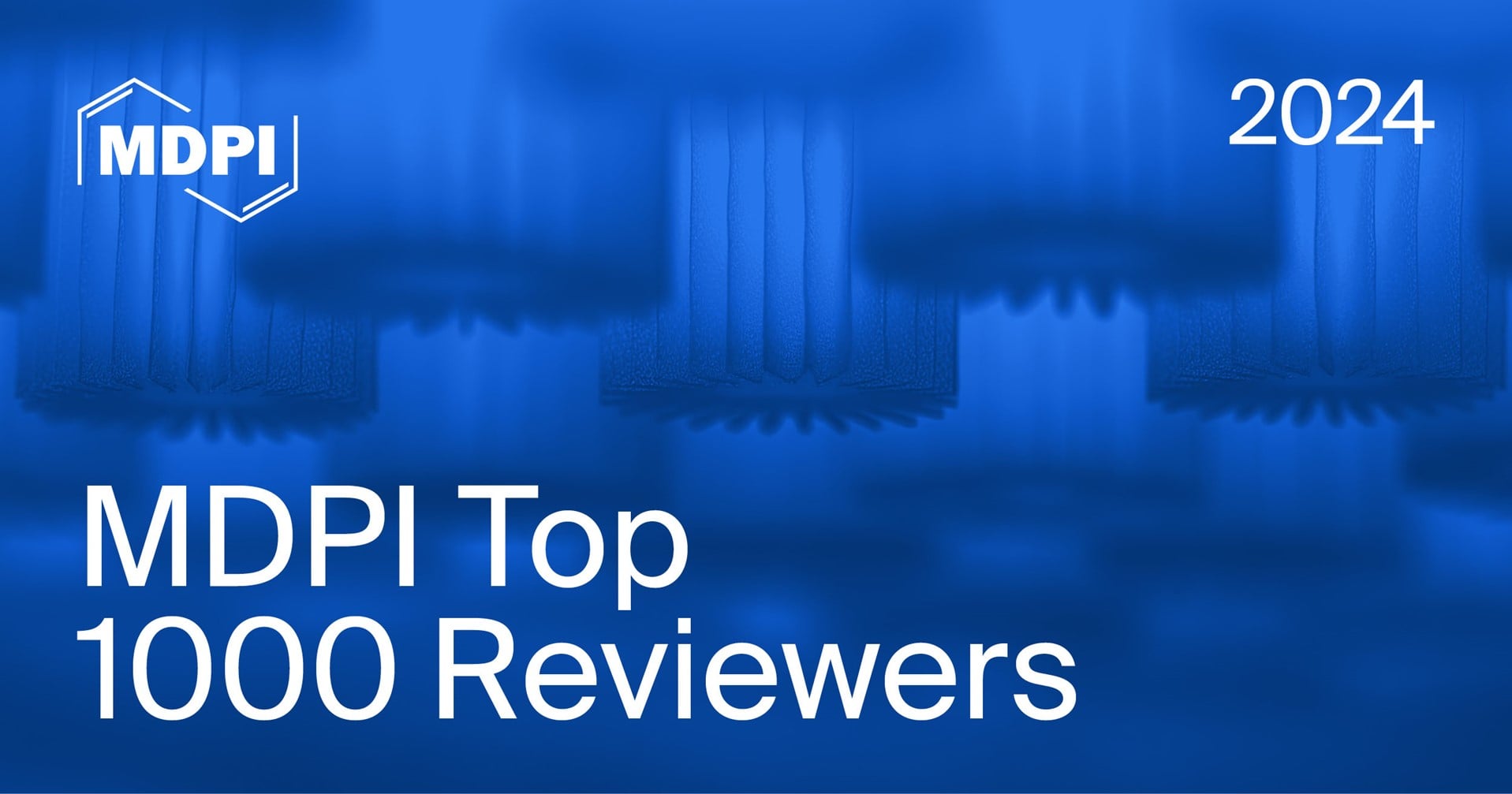Journal Description
Sustainability
Sustainability
is an international, peer-reviewed, open-access journal on environmental, cultural, economic, and social sustainability of human beings, published semimonthly online by MDPI. The Canadian Urban Transit Research & Innovation Consortium (CUTRIC), International Council for Research and Innovation in Building and Construction (CIB) and Urban Land Institute (ULI) are affiliated with Sustainability and their members receive discounts on the article processing charges.
- Open Access— free for readers, with article processing charges (APC) paid by authors or their institutions.
- High Visibility: indexed within Scopus, SCIE and SSCI (Web of Science), GEOBASE, GeoRef, Inspec, RePEc, CAPlus / SciFinder, and other databases.
- Journal Rank: JCR - Q2 (Environmental Studies) / CiteScore - Q1 (Geography, Planning and Development)
- Rapid Publication: manuscripts are peer-reviewed and a first decision is provided to authors approximately 19.3 days after submission; acceptance to publication is undertaken in 3.4 days (median values for papers published in this journal in the first half of 2025).
- Recognition of Reviewers: reviewers who provide timely, thorough peer-review reports receive vouchers entitling them to a discount on the APC of their next publication in any MDPI journal, in appreciation of the work done.
- Testimonials: See what our editors and authors say about Sustainability.
- Companion journals for Sustainability include: World, Sustainable Chemistry, Conservation, Future Transportation, Architecture, Standards, Merits, Bioresources and Bioproducts and Accounting and Auditing.
Impact Factor:
3.3 (2024);
5-Year Impact Factor:
3.6 (2024)
Latest Articles
How Land-Use Planning Deeply Affects the Spatial Distribution of Composite Soundscapes
Sustainability 2025, 17(24), 10948; https://doi.org/10.3390/su172410948 (registering DOI) - 7 Dec 2025
Abstract
Urban noise pollution poses a significant obstacle to sustainable development by compromising public health and well-being. Within this context, the soundscape emerges as a critical component in creating healthier and more livable cities. To further investigate the relationship between urban land-use planning characteristics
[...] Read more.
Urban noise pollution poses a significant obstacle to sustainable development by compromising public health and well-being. Within this context, the soundscape emerges as a critical component in creating healthier and more livable cities. To further investigate the relationship between urban land-use planning characteristics and soundscape distribution, this study examines the spatial distribution of urban soundscapes and urban spatial functions. It explores the influence of urban land-use types on both the acoustic environment and soundscape perception and evaluation, aiming to better understand the influencing factors and dynamics of composite soundscapes in urban environments. The results show that (a) acoustic environment characteristics and soundscape perception evaluations are influenced by urban land-use function, exhibit a spatial aggregation effect, and are affected by the surrounding environment. (b) The key acoustic indices affecting the perception and evaluation of urban soundscapes are the equivalent continuous A-weighted sound pressure level (LAeq), the background sound level (L90), the difference between C-weighted and A-weighted levels (LC–LA), and loudness. People perceive quiet environments more positively and report strong discomfort in noisy environments. (c) Urban land-use planning significantly impacts the urban soundscape, with significant differences observed in both the acoustic environment and soundscape perception evaluations across different land-use types. This study deepens the understanding of the acoustic environment and demonstrates that soundscape-oriented land-use planning can function as an effective tool for fostering inclusive, healthy, and socially sustainable communities.
Full article
(This article belongs to the Topic Biophilic Cities and Communities: Human-Environment Interaction and Sustainable Governance)
Open AccessArticle
From Waste to Brand: Circular Bio-Innovation and Low-Carbon Product Development in Taiwan’s Enzyme Village
by
Amit Kumar Sah, Yao-Ming Hong and Su Hwa Lin
Sustainability 2025, 17(24), 10947; https://doi.org/10.3390/su172410947 (registering DOI) - 7 Dec 2025
Abstract
This study explores a circular economy approach to agricultural waste transformation through an in-depth case study of Taiwan Enzyme Village Company. In response to global challenges related to food waste, resource inefficiency, and environmental degradation, the company has developed a low-energy fermentation system
[...] Read more.
This study explores a circular economy approach to agricultural waste transformation through an in-depth case study of Taiwan Enzyme Village Company. In response to global challenges related to food waste, resource inefficiency, and environmental degradation, the company has developed a low-energy fermentation system that converts surplus fruits and vegetable residues into a range of value-added products, including enzyme liquids, organic fertilizers, seed paper, and biodegradable packaging. The research employs the BS 8001 Circular Economy Principles as an analytical framework to evaluate the company’s operational model, stakeholder engagement, and environmental contributions. Findings reveal a highly localized and replicable circular system that emphasizes low-carbon production, community collaboration, and innovative reuse of biological resources. The study contributes practical insights for small- and medium-sized enterprises (SMEs) aiming to implement circular economy practices within the agricultural sector and highlights strategic pathways for sustainable rural development.
Full article
(This article belongs to the Special Issue Pathways to Carbon Neutrality: Circular Economy and Sustainable Innovation for Green Industry)
►▼
Show Figures
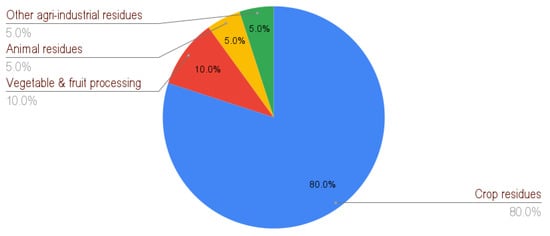
Figure 1
Open AccessReview
Mapping the Evidence on Care Home Decarbonisation: A Scoping Review Revealing Fragmented Progress and Key Implementation Gaps
by
Tara Anderson, Stephanie Craig, Gary Mitchell and Daniel Hind
Sustainability 2025, 17(24), 10946; https://doi.org/10.3390/su172410946 (registering DOI) - 7 Dec 2025
Abstract
Care homes are an energy-intensive component of the health and social care sector, with high demands on heating, lighting, laundry, catering and medical technologies. This constant energy use makes care homes a notable contributor to global greenhouse gas emissions. Decarbonising care homes presents
[...] Read more.
Care homes are an energy-intensive component of the health and social care sector, with high demands on heating, lighting, laundry, catering and medical technologies. This constant energy use makes care homes a notable contributor to global greenhouse gas emissions. Decarbonising care homes presents an opportunity to reduce emissions, operational costs, and deliver health co-benefits by improving air quality and thermal comfort. This scoping review mapped the international evidence on decarbonisation in care homes to inform sustainable practice and policy development. Guided by Joanna Briggs Institute methodology, seven databases (CINAHL, EMBASE, IEEE, MEDLINE, PubMed, Scopus, and Web of Science) were searched. Eligible studies included care home facilities, residents or staff with data managed in Covidence and extracted using the “The Greenhouse Gas Protocol Corporate Standard Inventory Accounting”. A total of 22 studies met the inclusion criteria. The evidence was concentrated around Scope 2 emissions, through efforts to monitor and reduce electricity use, while Scope 1 (facility emissions) and Scope 3 (supply chain emissions) remain comparatively underexplored. Evidence was fragmented and revealed risk aversion and care quality concerns related to adopting low-carbon technologies, as well as a growing interest in digital technologies and sustainable food procurement. Care homes should be prioritised within net zero healthcare frameworks, with targeted research, policy guidance, and investment to support decarbonisation.
Full article
Open AccessArticle
Study on the Impact Mechanism of Enterprise Digital Transformation on Supply Chain Resilience
by
Xufang Li, Zhuoxuan Li and Yujiao Cao
Sustainability 2025, 17(24), 10945; https://doi.org/10.3390/su172410945 (registering DOI) - 7 Dec 2025
Abstract
This study examines how digital transformation enhances supply chain resilience among Chinese firms, with a focus on the underlying mechanisms and contextual conditions. Grounded in dynamic capabilities theory, we conceptualize supply chain resilience along two dimensions: proactive capability and reactive capability. Using data
[...] Read more.
This study examines how digital transformation enhances supply chain resilience among Chinese firms, with a focus on the underlying mechanisms and contextual conditions. Grounded in dynamic capabilities theory, we conceptualize supply chain resilience along two dimensions: proactive capability and reactive capability. Using data from A-share listed companies between 2007 and 2022, we construct firm-level resilience measures through entropy weighting. Digital transformation is measured by textual analysis of corporate annual reports, supplemented with policy documents and academic literature to enrich the keyword dictionary. Empirical results, validated through instrumental variable estimation, Heckman two-stage models, and multiple robustness checks, show that digital transformation significantly improves overall supply chain resilience, with a stronger effect on reactive capability. Further analysis identifies three mediating channels: improved information sharing across the supply chain, enhanced firm-level innovation, and reduced exposure to environmental uncertainty. Heterogeneity tests reveal that the positive impact of digital transformation is more pronounced in non-state-owned enterprises, high-tech firms, and firms in technology-intensive or labor-intensive industries. The effect is also stronger for firms operating under high environmental uncertainty or located in regions with lower levels of marketization. These findings offer practical guidance for managers and policymakers aiming to strengthen supply chains through digitalization, particularly in an era marked by growing global disruptions and sustainability challenges.
Full article
Open AccessArticle
Hurricanes and Human Health in Louisiana: Insights from Hurricanes Laura, Delta, and Ida
by
Shobha Kumari Yadav, Robert V. Rohli, M. E. Betsy Garrison, Elisabeth Ponce-Garcia, Nazla Bushra and Charleen McNeill
Sustainability 2025, 17(24), 10944; https://doi.org/10.3390/su172410944 (registering DOI) - 7 Dec 2025
Abstract
Louisiana is one of the most disaster-prone states, with hurricanes ranking among the most destructive hazards. Hurricanes impede sustainability by straining hospital infrastructure, overwhelming emergency departments, and disrupting continuity of care. Louisiana’s healthcare system, characterized by high uninsured rates, limited rural access, and
[...] Read more.
Louisiana is one of the most disaster-prone states, with hurricanes ranking among the most destructive hazards. Hurricanes impede sustainability by straining hospital infrastructure, overwhelming emergency departments, and disrupting continuity of care. Louisiana’s healthcare system, characterized by high uninsured rates, limited rural access, and notable racial and socioeconomic disparities, is particularly vulnerable during disasters. This research explores trends of mental and respiratory health in Louisiana surrounding Hurricanes Laura (2020), Delta (2020), and Ida (2021). Analysis reveals a substantial increase in admissions after landfall of all three storms, with mental health conditions showing a larger surge than respiratory ones in already-vulnerable communities. Gender disparities were evident, with female patients accounting for a higher percentage across all three hurricanes and across all age groups. The results suggest the importance of considering social determinants of health during disasters and ensuring adequate resources for older populations with complex medical needs, thereby promoting more sustainable health systems. These results underscore how critical preparedness and recovery planning are for hospitals in hurricane-prone areas. Incorporating resilience measures such as reliable power systems, clearer evacuation pathways, and better coordination of post-disaster care can help protect patients and providers in the future.
Full article
(This article belongs to the Special Issue Climate Change, Air Pollution and Sustainable Environmental Protection)
►▼
Show Figures
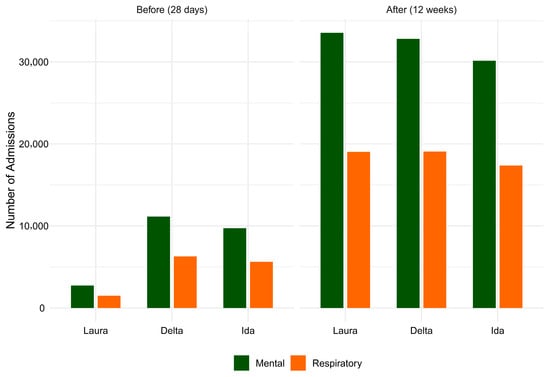
Figure 1
Open AccessArticle
How Does Entrepreneurial Defection Influence Ambidextrous Innovation? The Chain Mediation of Entrepreneurial Learning and Organizational Change
by
Hengsheng Gu, Yuchen Zhang, Yi Lu, Yubin Zhou and Qun Fu
Sustainability 2025, 17(24), 10943; https://doi.org/10.3390/su172410943 (registering DOI) - 7 Dec 2025
Abstract
Entrepreneurial defection, which leads to the loss of core talents and key resources, poses a severe threat to the innovation capacity and sustainable development of entrepreneurial enterprises. However, the mechanism through which it influences ambidextrous innovation—a key driver of sustainability comprising exploitative (short-term
[...] Read more.
Entrepreneurial defection, which leads to the loss of core talents and key resources, poses a severe threat to the innovation capacity and sustainable development of entrepreneurial enterprises. However, the mechanism through which it influences ambidextrous innovation—a key driver of sustainability comprising exploitative (short-term optimization) and exploratory (long-term breakthrough) activities—remains empirically unclear. Grounded in the Conservation of Resources Theory, this study analyzes 553 questionnaires from entrepreneurial enterprises (≤8 years old) to investigate the impact of entrepreneurial defection on ambidextrous innovation, focusing on the chain mediating roles of entrepreneurial learning and organizational change. The findings reveal that (1) Entrepreneurial defection does not directly promote ambidextrous innovation; its positive effect is fully mediated by entrepreneurial learning, organizational change, and their sequential path. (2) Significant heterogeneity exists in this mediating effect: the path via entrepreneurial learning is stronger for exploitative innovation, whereas the path via organizational change exerts a weak negative interference on exploratory innovation, though the positive effect of learning remains dominant. (3) Entrepreneurial learning is the core mediator, accounting for over 70% of the total indirect effect, and facilitates a “learning-change-innovation-sustainability” cycle. This study fills a critical empirical gap and extends the application of Conservation of Resources Theory. It offers practical insights for entrepreneurs: by strengthening learning and guiding organizational change, the pressure of resource loss can be transformed into a driver for dual innovation, enabling a transition from crisis recovery to sustainable development capability upgrading.
Full article
(This article belongs to the Special Issue Ecodesign of Products and Sustainable Manufacturing)
►▼
Show Figures
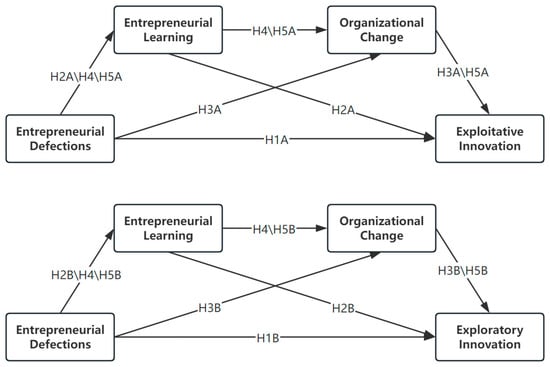
Figure 1
Open AccessReview
Microbial Synergistic Interactions in Mixed Cultures for Improved and Sustainable Power Generation in Microbial Fuel Cells: A Review
by
Asmamaw Abat Getu, Wubliker Dessie, Juvens Sugira Murekezi, Md Sourav Sarker, Geng Chen, Oluwadamilola Oluwatoyin Hazzan and Yong Xiao
Sustainability 2025, 17(24), 10942; https://doi.org/10.3390/su172410942 (registering DOI) - 7 Dec 2025
Abstract
Nonrenewable energy sources dominate global energy production, but their depletion and environmental impact pose serious challenges. The need for alternative and eco-friendly energy sources is increasingly evident. In this regard, utilizing knowledge gained from natural microorganisms to generate bioelectricity is a promising solution
[...] Read more.
Nonrenewable energy sources dominate global energy production, but their depletion and environmental impact pose serious challenges. The need for alternative and eco-friendly energy sources is increasingly evident. In this regard, utilizing knowledge gained from natural microorganisms to generate bioelectricity is a promising solution via microbial fuel cells (MFCs). Microbial fuel cells are an environmentally friendly technology that generates power from diverse organic substrates through the ‘catalytic’ activity of microorganisms. Although, MFCs still generate relatively low power, various scale-up studies have shown noticeable improvements in power output. Among the available strategies, mixed-culture systems are the simplest, sustainable, and direct way to improve bioelectricity production. However, the mixed culture microbial synergistic interactions and competition that drive power generation remain poorly understood. To address this, the objective of this review is to assess how synergistic interactions and metabolic networks within mixed microbial cultures enhance bioelectricity generation in microbial fuel cells. This review also explores the mixed-culture microbial fuel cell system as a promising renewable technology with potential applications in sustainable energy production.
Full article
(This article belongs to the Section Energy Sustainability)
Open AccessArticle
Evaluation of Mechanical Properties of Concrete with Plastic Waste Using Random Forest and XGBoost Algorithms
by
Mohammed K. Alkharisi and Hany A. Dahish
Sustainability 2025, 17(24), 10941; https://doi.org/10.3390/su172410941 (registering DOI) - 7 Dec 2025
Abstract
►▼
Show Figures
The increasing global production of plastic (P) waste presents a critical environmental challenge, while the construction industry’s demand for sustainable materials continues to grow. The building industry’s reliance on natural aggregates, a contributor to environmental degradation, requires sustainable alternatives. Utilizing plastic waste as
[...] Read more.
The increasing global production of plastic (P) waste presents a critical environmental challenge, while the construction industry’s demand for sustainable materials continues to grow. The building industry’s reliance on natural aggregates, a contributor to environmental degradation, requires sustainable alternatives. Utilizing plastic waste as a partial aggregate substitute in concrete offers dual advantages: preserving limited resources and redirecting waste from landfills. This research uses advanced machine learning (ML) to forecast the mechanical properties of P waste concrete. Random Forest (RF) and eXtreme Gradient Boosting (XGBoost) models with particle swarm optimization (PSO) were developed to predict compressive and tensile strengths of P waste concrete. A comprehensive dataset comprising 196 datapoints for compressive strength (CS) and 100 datapoints for tensile strength (TS) of P waste concrete was collected from the literature. The input parameters encompassed the plastic (P), cement (C), water-to-cement ratio (W/C), coarse aggregate (CA), fine aggregate (FA), and curing age (Age), while the outputs were CS and TS of P waste concrete. The constructed models were assessed utilizing various statistical metrics. The findings indicate that coefficient of determination of both XGBoost (CS, R2 = 0.9911, and TS, R2 = 0.9947) and RF (CS, R2 = 0.9757, and TS, R2 = 0.9737) models performed well, with XGBoost indicating better performance with fewer prediction errors. SHAP analysis emphasizes the substantial effect of P waste on concrete strength properties followed by C and Age. Furthermore, GUIs for predicting TS and CS of concrete containing P waste utilizing both RF and XGBoost models were developed. Overall, this study not only achieves superior accuracy through hybrid PSO-ML models but also contributes to sustainable construction materials and computational material science, offering a data-driven framework for optimizing mix designs that incorporate plastic waste, which can accelerate its adoption in eco-friendly engineering applications.
Full article
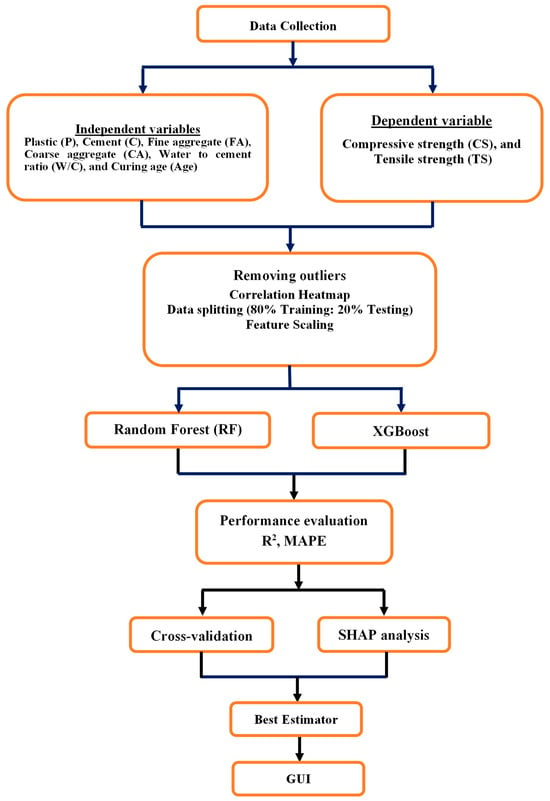
Figure 1
Open AccessArticle
Evaluating Crumb Rubber Modified (CRM) Asphalt as a Sustainable Binder Alternative for High-Friction Surface Treatments
by
Abdallah Aboelela, Alireza Roshan and Magdy Abdelrahman
Sustainability 2025, 17(24), 10940; https://doi.org/10.3390/su172410940 (registering DOI) - 7 Dec 2025
Abstract
High-friction surface treatments (HFSTs) are widely applied to improve pavement safety by enhancing long-term skid resistance. Although epoxy resins are commonly used due to their strength and durability, their high cost, susceptibility to delamination, incompatibility with substrates of flexible pavements, and adverse environmental
[...] Read more.
High-friction surface treatments (HFSTs) are widely applied to improve pavement safety by enhancing long-term skid resistance. Although epoxy resins are commonly used due to their strength and durability, their high cost, susceptibility to delamination, incompatibility with substrates of flexible pavements, and adverse environmental concerns limit their long-term performance. This study presents crumb rubber modified (CRM) asphalt as a sustainable alternative binder for HFST applications. CRM binders offer high performance and compatibility with existing pavement surfaces, cost effectiveness and reduced environmental impacts as compared to epoxy binders. In addition, the binder development utilizes enhanced recycling technologies for interacting with used tire rubber with asphalt. The evaluated CRM binders were prepared under varying interaction temperatures, crumb rubber contents, and types. The developed binders were evaluated for friction performance with two aggregate sources, calcined bauxite (CB) and rhyolite (Rhy). Binder characterization included rheological testing conducted through both frequency sweep and temperature sweep procedures. HFST mixes were evaluated using the British Pendulum Test (BPT), the Dynamic Friction Tester (DFT), and the Circular Track Meter (CTM) in collaboration with the Three-Wheel Polishing Device (TWPD) to simulate the traffic-induced polishing effect. The results showed that CRM content influenced binder performance under polishing. CRM asphalt-based HFST with a relatively high CRM content (15%) maintained a greater coefficient of friction (COF) and exhibited polishing resistance, showing low reduction in the COF after the total number of polishing cycles. In contrast, mean profile depth (MPD) analysis revealed that the most macrotexture efficiency was found in binders with a lower CRM content (10%) after completing the total number of polishing cycles. Analysis of Variance (ANOVA) showed a significant effect of the interaction conditions and rheological properties of CRM binders on the British pendulum number (BPN) loss due to the polishing process. As expected, aggregate source further influenced the resistance to polishing; CB outperformed Rhy with significantly lower aggregate loss under polishing. Overall, the results confirmed that CRM asphalt binders can effectively serve as a sustainable, flexible, and cost-effective alternative binder in HFST.
Full article
(This article belongs to the Special Issue Strategies for Improving the Sustainability of Asphalt Pavements)
►▼
Show Figures
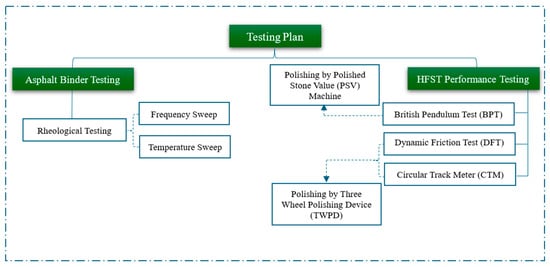
Figure 1
Open AccessArticle
The Impact of Open Public Data on Corporate Low-Carbon Technological Innovation: Evidence from China
by
Jing Wang, Jie Wang and Zhijian Cai
Sustainability 2025, 17(24), 10939; https://doi.org/10.3390/su172410939 (registering DOI) - 7 Dec 2025
Abstract
►▼
Show Figures
Open public data is a vital institutional arrangement for overcoming data constraints in corporate low-carbon technological innovation. Using a panel dataset of China’s Shanghai and Shenzhen A-share listed firms over the 2007–2023 period, this study employs a difference-in-differences (DID) approach to examine the
[...] Read more.
Open public data is a vital institutional arrangement for overcoming data constraints in corporate low-carbon technological innovation. Using a panel dataset of China’s Shanghai and Shenzhen A-share listed firms over the 2007–2023 period, this study employs a difference-in-differences (DID) approach to examine the impact of open public data on corporate low-carbon technological innovation. The results show that open public data has a significant positive effect on corporate low-carbon technological innovation, and the results remain robust across multiple validation tests. Mechanism tests point out that government transparency negatively moderates the promotional effect of public data openness on corporate low-carbon technological innovation, while barriers to factor mobility positively moderate this effect. The heterogeneity analysis indicates that the positive impact of open public data is more pronounced among firms characterized by higher R&D investment, lower financial constraints, and greater digitalization. Further analysis indicates that open public data also exhibits significant geographic and industry spillover effects, with the geographic spillover following an inverted U-shaped pattern of decay and the industry spillover driven by peer imitation. This study provides evidence on leveraging open public data to stimulate low-carbon innovation and facilitate green economic transformation, offering valuable insights for advancing data-driven sustainable development globally.
Full article
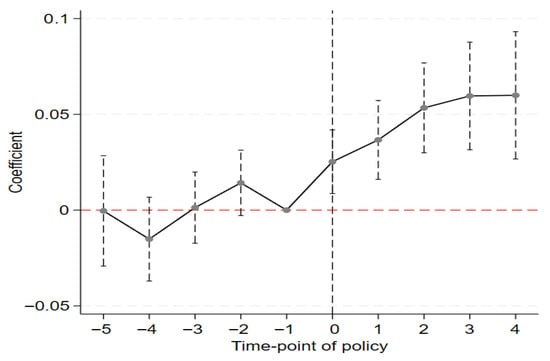
Figure 1
Open AccessArticle
Constructing a Cradle-to-Gate Carbon Emission Assessment and Analysis Framework Based on Life Cycle Thinking: A Case Study of Bicycle Brake Cable Products
by
Jui-Che Tu, Pei-Chi Huang, Shi-Chen Luo and Kharisma Creativani
Sustainability 2025, 17(24), 10938; https://doi.org/10.3390/su172410938 (registering DOI) - 7 Dec 2025
Abstract
In 2023, the bicycle industry in Taiwan reached a historic high. However, concerns about carbon emissions persist, particularly during the material acquisition and manufacturing stages of bicycle production. This study utilizes the Life Cycle Assessment (LCA) method, using SimaPro 9.5 for cradle-to-gate carbon
[...] Read more.
In 2023, the bicycle industry in Taiwan reached a historic high. However, concerns about carbon emissions persist, particularly during the material acquisition and manufacturing stages of bicycle production. This study utilizes the Life Cycle Assessment (LCA) method, using SimaPro 9.5 for cradle-to-gate carbon emission data analysis. This study thoroughly examines the complete life cycle of a bicycle brake cable product through a carbon reduction evaluation tool, identifying carbon hotspots in the product’s life cycle. The data reveals that packaging accounts for the highest proportion of factory carbon emissions in the brake cable product analysis (34.42%), followed by the product’s casing (30.60%), with the leading materials being metal, plastic, and paper. Throughout the cradle-to-gate process, we collaborated with product developers to utilize the LCA carbon reduction evaluation tool to analyze the life cycle of the brake cable product. By aligning market and development needs, we supported manufacturers in identifying additional carbon reduction strategies at the material selection, mechanical design, and manufacturing process stages. These strategies include using natural raw materials, reducing packaging volume, developing lightweight products, and investing in integrated equipment. By implementing these measures, companies can reduce the product’s carbon footprint and enhance resource efficiency during production. This assessment tool serves as a communication bridge between designers and engineers, translating LCA quantitative data into references for design and management decision-making. It also functions as a simplified analytical tool for SMEs to conduct preliminary diagnosis of carbon emission hotspots and plan improvement directions, particularly suitable for manufacturers lacking consulting resources and carbon inventory capabilities. The research findings not only help companies integrate carbon reduction thinking early in product development, forming a closed-loop system of quantitative analysis and design actions, but also provide concrete references for Taiwan’s bicycle industry to promote supply chain collaboration, achieve green transformation, and meet global carbon reduction goals.
Full article
(This article belongs to the Special Issue Toward Net-Zero Futures: Innovations in Carbon Management and Sustainable Transitions)
►▼
Show Figures
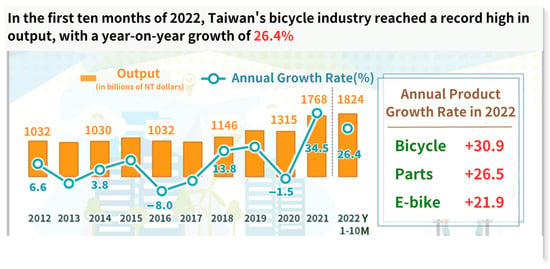
Figure 1
Open AccessArticle
Spatiotemporal Distribution of Cross-Platform Public Opinion in the 2023 Dezhou Earthquake: Implications for Disaster-Resilient Emergency Management
by
Chen Li, Xurui Wang and Yanjun Ye
Sustainability 2025, 17(24), 10937; https://doi.org/10.3390/su172410937 (registering DOI) - 7 Dec 2025
Abstract
Social media platforms have emerged as a critical infrastructure for disaster communication and emergency management. However, how public opinion varies across platforms during earthquake events and how such differences can inform resilient disaster strategies remain underexplored. This study analyzes public opinion responses to
[...] Read more.
Social media platforms have emerged as a critical infrastructure for disaster communication and emergency management. However, how public opinion varies across platforms during earthquake events and how such differences can inform resilient disaster strategies remain underexplored. This study analyzes public opinion responses to the 2023 M5.5 Dezhou earthquake across three major Chinese social media platforms—Sina Weibo, Bilibili, and Douyin—based on 28,557 posts. By combining Latent Dirichlet Allocation (LDA), Word2Vec, and Convolutional Neural Networks (CNNs), we examine the temporal, spatial, thematic, and emotional patterns of public discourse. The results show (1) a bimodal public attention pattern within 24 h of the earthquake, with platform-specific response timings; (2) spatial clustering of public concern in the epicenter (Shandong) and historically high-risk regions (Sichuan–Chongqing); (3) differentiated topic preferences reflecting platform functions—emotional expression (Weibo), science popularization (Bilibili), and real-time impact sharing (Douyin); and (4) a predominance of positive/neutral sentiment, influenced by user demographics and algorithmic content curation. This study proposes a resilience-oriented public opinion analysis framework aligned with the disaster lifecycle and offers recommendations for platform-specific risk communication, psychological support, and policy planning. Findings contribute to digital disaster governance and the integration of social media analytics into sustainable emergency management.
Full article
Open AccessArticle
Lean Implementation in Sustainable Energy Entrepreneurship: Key Drivers for Operational Efficiency
by
T. A. Alka, M. Suresh, Ateekh Ur Rehman and Shanthi Muthuswamy
Sustainability 2025, 17(24), 10936; https://doi.org/10.3390/su172410936 (registering DOI) - 7 Dec 2025
Abstract
This research examines the drivers of lean implementation in sustainable energy enterprises (SEEs) to balance efficiency, sustainability, and competitiveness. This research investigates the interdependence among lean drivers and classifies them by driving power and dependence. This study followed a novel mixed-method approach combining
[...] Read more.
This research examines the drivers of lean implementation in sustainable energy enterprises (SEEs) to balance efficiency, sustainability, and competitiveness. This research investigates the interdependence among lean drivers and classifies them by driving power and dependence. This study followed a novel mixed-method approach combining a systematic literature review for driver identification, interviews with entrepreneurs for expert consensus, and analysis using total interpretive structural modelling (TISM), cross-impact matrix multiplication applied to classification (MICMAC), and a graph-theoretic approach (GTA). The result indicated that leadership commitment, teamwork and collaboration, and time management are high drivers; cost reduction, resource optimization, and continuous improvement are linkage drivers; and customer focus and flexibility are found as dependent drivers, revealing the sustainable outcome. This provides a structured pathway for the SEEs for the lean implementation drivers, where prioritization is required. The exploration adds to the Resource-Based View, dynamic capability theory, system theory, etc. The study calls for policymakers’ interventions in designing capacity-building programmes, leadership training, and collaborations. This research incorporated the antecedents–decisions–outcomes (ADO) framework for highlighting the antecedents, leading to decisions, and the outcomes of the choices, with future research questions connecting with multiple sustainable development goals (SDGs), such as SDG7, SDG9, SDG12, and SDG13.
Full article
(This article belongs to the Special Issue Entrepreneurship and Innovation Management under Sustainable Development)
Open AccessArticle
Simulation of Fracture Propagation and Permeability Enhancement in Heterogeneous Coal Seams During Hydraulic Fracturing Using a Thermo-Hydro-Mechanical-Damage Coupling Model
by
Sukai Wang, Lipeng Zhang, Yonglong Li, Wei Liu, Xionghui Liu, Yan Liang, Songling Pu, Lei Sun, Shiqi Liu and Wenkai Wang
Sustainability 2025, 17(24), 10935; https://doi.org/10.3390/su172410935 (registering DOI) - 7 Dec 2025
Abstract
The development of deep coalbed methane is hindered by the strong heterogeneity of coal mechanical properties and complex hydraulic fracturing behavior. To identify the key factors controlling fracture geometry and permeability enhancement, this study developed a thermo-hydro-mechanical-damage coupled model within a COMSOL Multiphysics
[...] Read more.
The development of deep coalbed methane is hindered by the strong heterogeneity of coal mechanical properties and complex hydraulic fracturing behavior. To identify the key factors controlling fracture geometry and permeability enhancement, this study developed a thermo-hydro-mechanical-damage coupled model within a COMSOL Multiphysics 6.3-MATLAB R2022b co-simulation framework, incorporating a Weibull random field to characterize mechanical heterogeneity. Sensitivity analysis demonstrates that tensile strength is the predominant factor governing both the fracturing damage zone and permeability-enhanced area, with its damage area extreme difference (10.094) and coefficient of variation (0.85) significantly surpassing those of other parameters. Poisson’s ratio and elastic modulus emerge as key secondary parameters, while compressive strength shows the lowest sensitivity. The parametric influences exhibit distinct patterns: tensile strength shows a strong negative correlation with damage and permeability-enhanced areas (up to 85% reduction), whereas the maximum permeability enhancement rate follows a non-monotonic trend, peaking at 215 when tensile strength reaches 3.33 MPa. Compressive strength minimally affects the damage area (~15%) but steadily improves the maximum permeability enhancement rate (7.5% increase). Elastic modulus exhibits an optimal value (8.93 GPa) for maximizing damage area, while negatively correlating with maximum permeability enhancement rate (9.1% decrease). Fracture morphology is differentially controlled by multiple parameters: low compressive strength promotes fracture deflection and branching, elastic modulus regulates fracture network complexity, and low Poisson’s ratio enhances coal brittleness to effectively activate natural fractures, thereby facilitating complex fracture network formation.
Full article
(This article belongs to the Special Issue Greenhouse Gas Emission Reduction for Sustainable Resource Utilization)
►▼
Show Figures
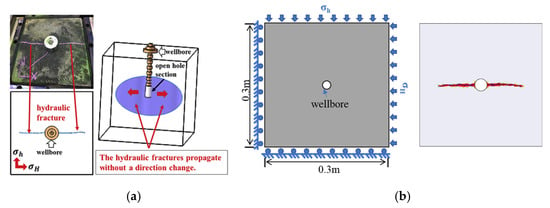
Figure 1
Open AccessArticle
The Contribution of Regional Products to Short Agri-Food Supply Chains
by
Luiza Ossowska, Dorota Janiszewska, Patrycja Beba, Monika Małgorzata Wojcieszak-Zbierska and Grzegorz Kwiatkowski
Sustainability 2025, 17(24), 10934; https://doi.org/10.3390/su172410934 (registering DOI) - 7 Dec 2025
Abstract
Short food supply chains are a typical solution for traditional food distribution systems. Geographic proximity is a key determinant of both short supply chains and regional products. Regional foods are linked to a place, both through the origin of raw materials and through
[...] Read more.
Short food supply chains are a typical solution for traditional food distribution systems. Geographic proximity is a key determinant of both short supply chains and regional products. Regional foods are linked to a place, both through the origin of raw materials and through their ties to traditions. The aim of the study is to identify the key features of farmers–regional food producers building short food supply chains. The research material comes from surveys conducted in July 2024. The research covered farmers–small producers of regional food in Poland. 252 questionnaires were selected for the presented research. The respondents were divided into two groups: farmers who sold only directly and farmers who used sales intermediaries. Research shows that direct sales dominate among farmers and producers of regional food in Poland. Factors of particular importance in building short regional food supply chains include connections to recipes and family traditions, in terms of knowledge and practical skills. Given the numerous advantages of short regional food supply chains, this activity is worth supporting. Institutional support should encompass not only financial assistance but also organizational support to help connect producers with consumers. Promotional activities highlighting regional food and its producers could be another pillar of support.
Full article
(This article belongs to the Special Issue Food, Supply Chains, and Sustainable Development—Second Edition)
Open AccessArticle
Multisource Remote Sensing and Machine Learning for Spatio-Temporal Drought Assessment in Northeast Syria
by
Abdullah Sukkar, Ozan Ozturk, Ammar Abulibdeh and Dursun Zafer Seker
Sustainability 2025, 17(24), 10933; https://doi.org/10.3390/su172410933 (registering DOI) - 7 Dec 2025
Abstract
Increasing aridity across the Middle East Region has intensified concerns about the impacts of drought in conflict-affected Northeast Syria (NES). In this study, drought dynamics and their drivers from 2000 to 2023 were analyzed by integrating ERA5-Land meteorological data, MODIS land-surface indicators, FLDAS
[...] Read more.
Increasing aridity across the Middle East Region has intensified concerns about the impacts of drought in conflict-affected Northeast Syria (NES). In this study, drought dynamics and their drivers from 2000 to 2023 were analyzed by integrating ERA5-Land meteorological data, MODIS land-surface indicators, FLDAS soil moisture, and ISRIC soil properties at 250 m resolution. The integration of these multisource datasets contributes to a more comprehensive understanding of drought dynamics by combining information on weather conditions, vegetation status, and soil characteristics. The proposed drought analysis framework clarifies independent controls on meteorological, agricultural, and hydrological drought, underscoring the role of land-atmosphere feedback through soil temperature. This workflow provides a transferable approach for drought monitoring and hypothesis generation in arid regions. For this purpose, different XGBoost models were trained for the vegetation health index (VHI), the standardized precipitation-evapotranspiration index (SPEI), and surface soil-moisture anomalies, excluding target-related variables to prevent data leakage. Model interpretability was achieved using SHAP, complemented by time-series, trend, clustering, and spatial autocorrelation analyses. The models performed well (R2 = 0.86–0.90), identifying soil temperature, SPEI, relative humidity, precipitation, and soil-moisture anomalies as key predictors. Regionally, soil temperature rose (+0.069 °C yr−1), while rainfall (−1.203 mm yr−1) and relative humidity (−0.075% yr−1) declined. Spatial analyses demonstrated expanding heat hotspots and persistent soil moisture deficits. Although 2018–2019 were anomalously wet, recent years (2021–2023) exhibited severe drought.
Full article
(This article belongs to the Topic Disaster and Environment Monitoring Based on Multisource Remote Sensing Images)
Open AccessArticle
Computer Simulation as a Tool for Cost and CO2 Emission Analysis in Production Process Simulations
by
Szymon Pawlak and Mariola Saternus
Sustainability 2025, 17(24), 10932; https://doi.org/10.3390/su172410932 (registering DOI) - 7 Dec 2025
Abstract
►▼
Show Figures
Sustainable development is currently a key priority in improving production systems, requiring an integrated approach that combines economic efficiency, environmental responsibility, and rational energy management. In response to these challenges, this article presents a novel application of computer simulation as a tool for
[...] Read more.
Sustainable development is currently a key priority in improving production systems, requiring an integrated approach that combines economic efficiency, environmental responsibility, and rational energy management. In response to these challenges, this article presents a novel application of computer simulation as a tool for comprehensively assessing the impact of technological improvements in the machining process. The study introduces and compares two models: a baseline model representing the actual state of the machinery fleet with conventional machine tools, and an innovative alternative model incorporating modern numerically controlled (CNC) machines. The results demonstrate, for the first time in this context, that the implementation of CNC technology not only significantly reduces process time and energy demand but also improves resource efficiency, thereby lowering CO2 emissions and operating costs. This research highlights the innovative use of computer simulation to support decision-making in sustainable manufacturing, offering a practical framework for evaluating technological modernization options and promoting the sustainable development of production enterprises.
Full article
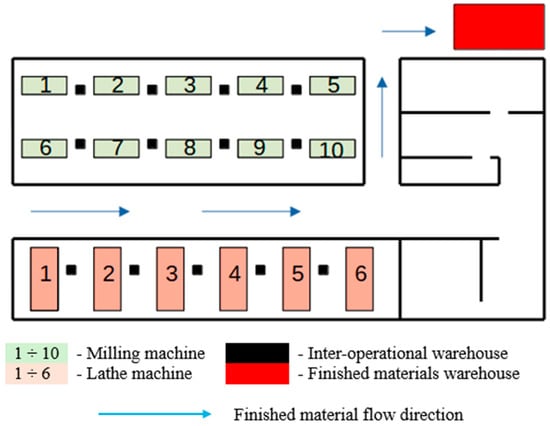
Figure 1
Open AccessArticle
From Experiment to Example: Evaluating the Sustainability of Shore Nourishment in the Southeastern Baltic (Palanga, Lithuania)
by
Donatas Pupienis, Darius Jarmalavičius, Gintautas Žilinskas and Dovilė Karlonienė
Sustainability 2025, 17(24), 10931; https://doi.org/10.3390/su172410931 (registering DOI) - 7 Dec 2025
Abstract
►▼
Show Figures
Coastal erosion and increasingly severe storms present a growing challenge to the sustainable management of sandy shorelines. This study examines the geomorphological, sedimentological and geochemical responses of the Palanga coastal area in the Lithuanian Baltic Sea to beach nourishment projects implemented between 2006
[...] Read more.
Coastal erosion and increasingly severe storms present a growing challenge to the sustainable management of sandy shorelines. This study examines the geomorphological, sedimentological and geochemical responses of the Palanga coastal area in the Lithuanian Baltic Sea to beach nourishment projects implemented between 2006 and 2012. A multi-parameter approach was used, combining cross-shore profile monitoring with grain-size, magnetic susceptibility, mineralogical and geochemical analyses, in order to assess sediment redistribution and post-nourishment adjustments. The results demonstrate that nourishment projects substantially increased beach width, height and sand volume; however, the shoreline response was uneven in space and time. Subsequent years were characterised by gradual sediment redistribution along and across the coast, resulting in partial morphological stabilisation. Elevated concentrations of heavy minerals and trace elements immediately after nourishment indicated short-term enrichment from mineralogically distinct material, which was later diluted by natural reworking. The findings demonstrate that properly designed and monitored nourishment enhances coastal resilience, representing a human-induced adjustment within the prevailing coastal morphodynamic regime. While the socio-ecological effects were not directly evaluated, the identified geoindicators offer insights into the physical sustainability of coastal systems, emphasising the importance of evidence-based, adaptive management in line with the United Nations Sustainable Development Goals (SDGs 11, 13 and 14).
Full article
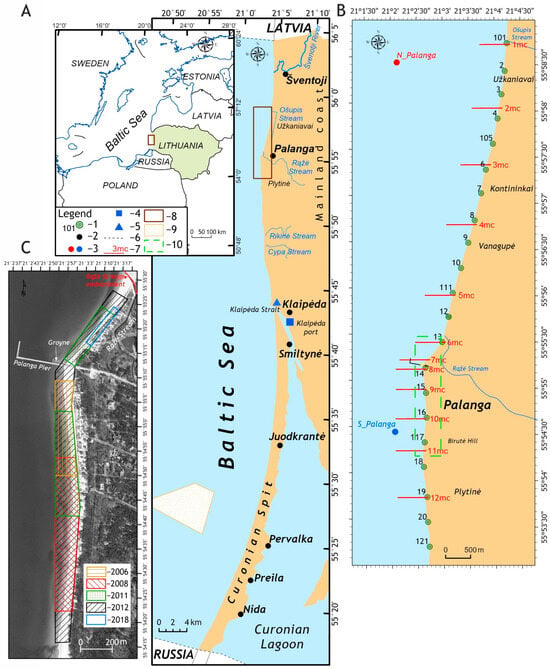
Figure 1
Open AccessArticle
Selective Attributes and Purchase Behavior for Black Sesame (Sesamum indicum L.) Seolgi: An Empirical Study of South Korean Consumers
by
Chan Ho Choi, Ji Ahn Han and Ki Han Kwon
Sustainability 2025, 17(24), 10930; https://doi.org/10.3390/su172410930 (registering DOI) - 7 Dec 2025
Abstract
►▼
Show Figures
The purpose of this study is to examine how the selective attributes of Heugimja Seolgi, a traditional Korean food, influence consumers’ purchasing behavior. Data were collected through an online survey of adults in their 20s to 60s residing in the Republic of
[...] Read more.
The purpose of this study is to examine how the selective attributes of Heugimja Seolgi, a traditional Korean food, influence consumers’ purchasing behavior. Data were collected through an online survey of adults in their 20s to 60s residing in the Republic of Korea who had previously consumed Heugimja Seolgi. Most respondents were in their 30s (34.5%) and 60s (25.7%). A total of 342 valid responses were analyzed using SPSS 25.0. Diversity and image, as sub-factors of the selective attributes for Heugimja Seolgi, were found to have a significantly positive impact on repurchase behavior, whereas quality did not show a statistically significant effect. This finding suggests that to increase repurchase rates, these factors must be considered, as Heugimja Seolgi is commonly chosen as a meal replacement, snack, or gift. Consumers also place great importance on the hygiene, cleanliness, and image of the stores selling the product. Ongoing research in this area is essential for the sustainable development of the Korean rice cake industry and is expected to contribute significantly to promoting the cultural and nutritional significance of traditional Korean rice cakes.
Full article
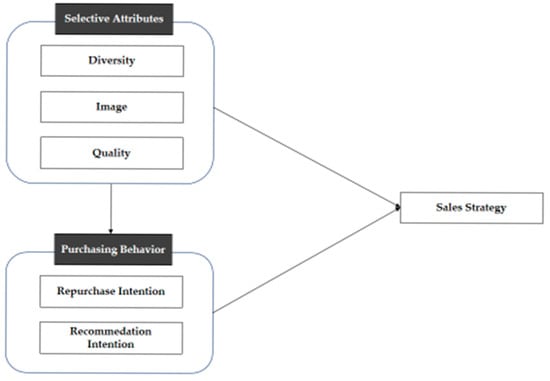
Figure 1
Open AccessArticle
The Cascade of Exclusion: A Mixed-Methods Study of Welfare Inequity and Its Foundational Determinants Among Thailand’s Homeless Population
by
Warisara Kitkiwan and Chitralada Chaiya
Sustainability 2025, 17(24), 10929; https://doi.org/10.3390/su172410929 (registering DOI) - 7 Dec 2025
Abstract
Achieving sustainable development (SD) and enhancing urban quality of life are undermined by the systemic exclusion of marginalized groups. Despite the global expansion of welfare systems, a welfare paradox persists, wherein universal policies often reinforce exclusion. This study investigates this paradox through a
[...] Read more.
Achieving sustainable development (SD) and enhancing urban quality of life are undermined by the systemic exclusion of marginalized groups. Despite the global expansion of welfare systems, a welfare paradox persists, wherein universal policies often reinforce exclusion. This study investigates this paradox through a mixed-methods analysis of welfare inequity among homeless individuals in Khon Kaen, Thailand. Combining a quantitative survey (n = 202) with in-depth interviews of homeless persons and state officials, we model the structural nature of this exclusion. Results reveal systemic disparities by gender, age, and displacement causes. Critically, a predictive model identifies housing and education access as foundational determinants, collectively explaining 89.9% of the variance in economic inclusion (R2 = 0.899, p < 0.001). Qualitative data elucidate the mechanisms behind these statistics, highlighting how the lack of official documentation and institutional stigma sever access to the broader welfare system. We conceptualize these interdependencies as a foundational capability cascade, where deficits in core domains trigger compounding exclusion. By integrating statistical modeling with narrative evidence, this research provides a robust framework for social exclusion and offers an evidence-based roadmap for designing equity-focused policy reforms that are essential for inclusive urban sustainability.
Full article
(This article belongs to the Special Issue Quality of Life in the Context of Sustainable Development)
►▼
Show Figures
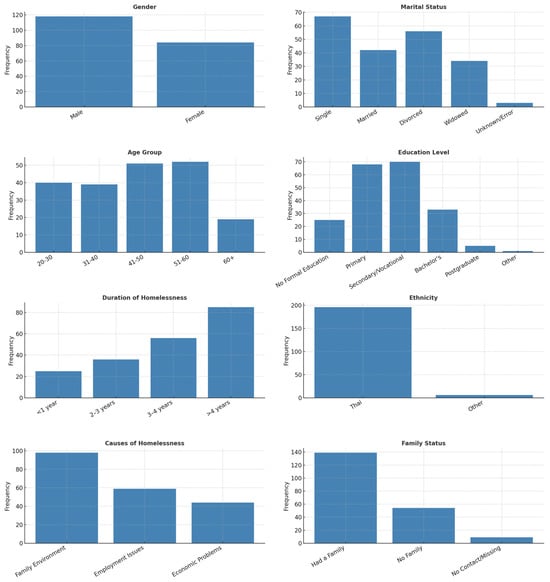
Figure 1

Journal Menu
► ▼ Journal Menu-
- Sustainability Home
- Aims & Scope
- Editorial Board
- Reviewer Board
- Topical Advisory Panel
- Instructions for Authors
- Special Issues
- Topics
- Sections & Collections
- Article Processing Charge
- Indexing & Archiving
- Editor’s Choice Articles
- Most Cited & Viewed
- Journal Statistics
- Journal History
- Journal Awards
- Society Collaborations
- Conferences
- Editorial Office
Journal Browser
► ▼ Journal BrowserHighly Accessed Articles
Latest Books
E-Mail Alert
News
Topics
Topic in
Buildings, CivilEng, Energies, Sustainability
Energy Systems in Buildings and Occupant Comfort
Topic Editors: Eusébio Z. E. Conceição, Hazim B. AwbiDeadline: 20 December 2025
Topic in
Education Sciences, Future Internet, Information, Sustainability
Advances in Online and Distance Learning
Topic Editors: Neil Gordon, Han ReichgeltDeadline: 31 December 2025
Topic in
Geosciences, Land, Remote Sensing, Sustainability
Disaster and Environment Monitoring Based on Multisource Remote Sensing Images
Topic Editors: Bing Guo, Yuefeng Lu, Yingqiang Song, Rui Zhang, Huihui ZhaoDeadline: 1 January 2026
Topic in
Buildings, Energies, Smart Cities, Sustainability
Recent Studies on Climate-Neutral Districts and Cities
Topic Editors: Xingxing Zhang, Rosaria VolpeDeadline: 20 January 2026

Conferences
Special Issues
Special Issue in
Sustainability
Removal of Heavy Metals Contamination to Enhance the Sustainable Environment
Guest Editors: Meng Wang, Shanshan LiDeadline: 10 December 2025
Special Issue in
Sustainability
The Future of Bridge Engineering: Sustainable Infrastructure and Structural Stability
Guest Editor: Chuang CuiDeadline: 10 December 2025
Special Issue in
Sustainability
Carbon Cycling in the Terrestrial Environment and Environmental Sustainability
Guest Editor: Tsung-chow SuDeadline: 10 December 2025
Special Issue in
Sustainability
Transportation Electrification and Vehicle-to-Everything (V2X) Technologies
Guest Editors: Yingdong He, Bin ZouDeadline: 11 December 2025
Topical Collections
Topical Collection in
Sustainability
Life Cycle Assessment of Modern Mobility (Technologies) – Managing the Turnaround
Collection Editor: Eckard Helmers
Topical Collection in
Sustainability
Advances in Biomass Waste Valorization
Collection Editors: Petronela Nechita, Rodica-Mihaela Dinicǎ, Bianca Furdui
Topical Collection in
Sustainability
The Impact of Digitalization on the Quality of Life
Collection Editor: Yury Klochkov
Topical Collection in
Sustainability
Marketing and Sustainability
Collection Editor: Colin Michael Hall



